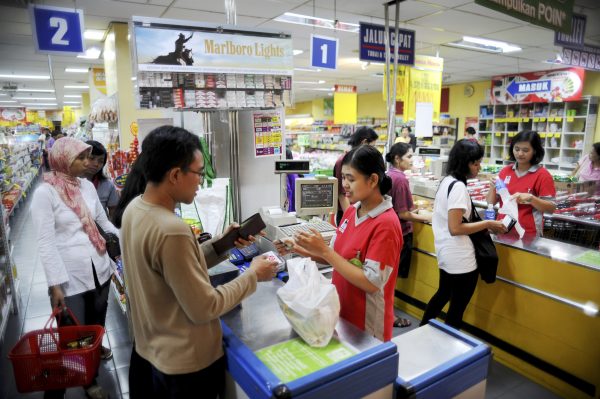The McKinsey Global Institute is even more emphatic: ‘We are quite simply witnessing the biggest economic transformation the world has ever seen as the populations of cities in emerging markets expand and enjoy rising incomes — producing a game-changing new wave of consumers with considerable spending power’.
But who are these people that are about to change the world? Are they really so deserving of our attention, and if so, why? What exactly is at stake in their rise?
For some development specialists, a defining characteristic of the growing middle class is that it represents people who are no longer poor. But there are different calculations and opinions on how the middle-class should be defined. For example, Martin Ravallion of the World Bank defines the global middle class as individuals earning between US$2–13 a day at 2005 purchasing power parity (PPP). In this definition, a person is part of the middle class of the developing world ‘if that person is not poor by developing country standards, though still poor by developed country standards’.
On the other hand, the Asian Development Bank (ADB) defines the middle class in terms of per capita consumption of between US$2–20 per day (at 2005 PPP). Different calculations of poverty have led some economists to argue that it makes more sense to define the new middle class in terms of their consumption rather than their simply being non-poor.
Using Ravallion’s definition, it was estimated that in the developing world approximately one person in three was in the middle class in 1990. In 2005 it was one in two. This means an extra 1.2 billion people joined the middle class in 15 years, with China accounting for about 632 million (52 per cent) and India 117 million (9.6 per cent). Careful analysis showed this was not the result of a simple horizontal shift in income distribution (whereby all incomes rise by a similar proportion), but rather of greater poverty reduction at the lower extremes and a ‘bunching up’ of people living just above the poverty line, so that in 2005 one person in six in the developing world was living on between US$2–3 a day.
Trends in the population dynamics of Asia’s middle class are complex and highly dependent on the shape of overall income distribution (which itself is changing), but the overall pattern is clear: the middle class in Asia’s emerging economies is growing faster than the population as a whole, and its aggregate income is growing faster still.
As the middle class grows in size and affluence it can become a force of its own for further economic growth. The middle class, when compared with powerful elites on the one hand or the poor on the other, includes population segments most committed to values aligned with sustained economic growth: they embrace competition and openness to the world; they admire innovation and entrepreneurship; they value education and personal development; and they have an insatiable demand for products and services to suit their needs for security, comfort and convenience. The enormous diversity of occupation and lifestyle in the middle class can also be seen as a valuable asset.
But things can go wrong too.
Thomas Piketty and others have shown that too much inequality is bad for growth, and even worse for general psychological wellbeing. In the case of Brazil the rising middle class was not strong enough to transform what the Massachusetts Institute of Technology’s Danon Acemoglu calls the ‘extractive institutions’ strengthening the rule of the elite. The emergence of a rising middle class does not mean that future middle-class growth is guaranteed if the institutions supporting open competition and innovation are not in place.
With the right political support Asia’s growing middle class can be an engine of economic growth regionally and globally, but its spending power also presents a challenge for achieving sustainable development. In the absence of transformational change to reduce externalities, more consumption means more demand on natural resources and more pollution.
No one denies Asian populations the right to develop, but national leaders and policymakers everywhere have a responsibility to initiate mechanisms to decouple economic growth and environmental degradation.
Middle class people support reducing pollution in their own local environments where they can see and enjoy the benefits, but finding the will to support regional or global action — as is needed to mitigate climate change — is more difficult. This will be easier if middle class growth is inclusive and some of the new wealth is used to eradicate poverty, support public goods and protect the environment. The model of development we see in many Asian cities — where the middle class retreats into its own world of gated communities, private schools and private hospitals — is not ideal.
The rise of Asia’s middle class may be part of the most momentous economic transformation in recent history, but national leaders need to make sure the right institutional structures are in place if this transformation is to produce long-term benefits for all.
A lot is at stake. A growing middle class can mean more people lifted out of poverty and leading comfortable and productive lives. But it can also mean more social inequality, more pollution, more congestion, and more loss of natural capital and public goods. History shows that while the middle classes can to a large extent make their own destinies, political leadership is vital if their rise is to contribute to broad-based national prosperity.
Adrian C. Hayes is an Adjunct Associate Professor at the Australian Demographic and Social Research Institute at the Australian National University.
This article appeared in the most recent edition of the East Asia Forum Quarterly, ‘The state and economic enterprise’.

